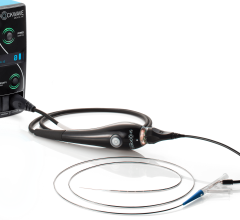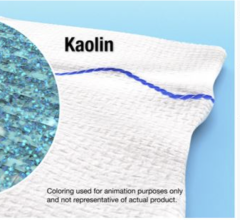
July 11, 2023 — The U.S. Food and Drug Administration (FDA) is informing healthcare providers about updated information associated with paclitaxel-coated devices used to treat peripheral arterial disease (PAD).
Based on the FDA's review of the totality of the available data and analyses, it has determined that the data does not support an excess mortality risk for paclitaxel-coated devices. The FDA previously communicated about this topic in 2019 and is now providing updated information.
Recommendations for Health Care Providers
- Discuss the risks and benefits of all available PAD treatment options, including paclitaxel-coated devices, with your patients.
- Continue routine monitoring of patients treated with paclitaxel-coated balloons and paclitaxel-eluting stents.
- Ensure patients receive optimal medical therapy for PAD and other cardiovascular risk factors as well as guidance on healthy lifestyles including weight control, smoking cessation, and exercise.
- Report any adverse events or suspected adverse events to the FDA.
Additional Clinical Evidence for Paclitaxel-Coated Devices
Since the Circulatory System Devices Panel of the Medical Devices Advisory Committee meeting [1] and the FDA's Letter to Health Care Providers on August 7, 2019External Link Disclaimer, additional data from the pivotal randomized controlled trials (RCTs) has become available. The FDA has worked with device manufacturers and external stakeholders to develop the protocol and analysis plan for new data generation.
Device manufacturers collaborated in an updated meta-analysis, which included additional studies, more complete vital status information, and longer-term follow-up compared to prior studies. In these studies, patient follow-up ranged from 2 to 5 years, with data from most studies available out to 5 years. FDA clinicians and statisticians reviewed the study data and concluded that the updated RCT meta-analysis does not indicate that the use of paclitaxel-coated devices is associated with a late mortality risk.
The FDA also reviewed additional analyses of the risk for late mortality, including the SWEDEPAD trial interim analysis [2], the VOYAGER PAD study [3], the German BARMER Health Insurance study [4], the U.S. Veterans Health Administration study [5], and the Medicare SAFE-PAD study [6]. None of these studies, with mean or median follow-up ranging from 1.7 to 3.5 years, found a risk for late mortality associated with paclitaxel-coated devices.
Longer-term follow-up in several of these studies is ongoing.
This issue applies to all paclitaxel-coated devices, including all models, lots, and unique device identifiers.
FDA Actions
The FDA will work with device manufacturers to update product labeling based on the current available data.
The FDA will continue to monitor the post-market performance of this product class and keep the public informed if there are any new recommendations on the FDA's Paclitaxel-Coated Balloons and Stents for Peripheral Arterial Disease web page.
Reporting Problems to the FDA
The FDA encourages health care providers to report any adverse events or suspected adverse events experienced with paclitaxel-coated devices.
- You can submit voluntary reports through MedWatch, the FDA Safety Information and Adverse Event Reporting program.
- Device manufacturers and user facilities must comply with the applicable Medical Device Reporting (MDR) regulations.
- Health care personnel employed by facilities that are subject to the FDA's user facility reporting requirements should follow the reporting procedures established by their facilities.
By promptly reporting adverse events, you can help the FDA identify and better understand the risks associated with medical devices.
Contact Information
If you have questions about this letter, contact the Division of Industry and Consumer Education (DICE).
Additional Resources from the FDA
- FDA Panel: June 19-20, 2019: Circulatory System Devices Panel of the Medical Devices Advisory Committee Meeting Announcement
- SWEDEPAD Study: Mortality with Paclitaxel-Coated Devices in Peripheral Artery Disease (nejm.org)External Link Disclaimer
- VOYAGER PAD Study: Rivaroxaban in Peripheral Artery Disease after Revascularization | NEJMExternal Link Disclaimer
- BARMER Health Insurance Study: Editor's Choice - Long Term Survival after Femoropopliteal Artery Revascularisation with Paclitaxel Coated Devices: A Propensity Score Matched Cohort Analysis - PubMed (nih.gov)
- The U.S. Veterans Health Administration Study: Survival and Causes of Death Among Veterans With Lower Extremity Revascularization With Paclitaxel-Coated Devices: Insights From the Veterans Health Administration - PubMed (nih.gov)
- The Medicare SAFE-PAD Study: Update From the Longitudinal Assessment of Safety of Femoropopliteal Endovascular Treatment With Paclitaxel-Coated Devices Among Medicare Beneficiaries: The SAFE-PAD Study | Circulation: Cardiovascular Interventions (ahajournals.org)
Related Paclitaxel Safety Content:
SAFE-PAD Study Shows No Safety Issues With Paclitaxel-coated Devices In Peripheral Artery Disease
No Increased Long-Term Mortality for the Paclitaxel-Coated Zilver PTX Stent
FDA Issues Letter About Paclitaxel Coated Balloons and Eluting Stents
Industry, Investigators Push Back With Patient-Level Data Showing No Increased Death From Paclitaxel-Based PAD Therapies
No Increased Long-Term Mortality for the Paclitaxel-Coated Zilver PTX Stent
FDA Issues Letter About Paclitaxel Coated Balloons and Eluting Stents
Top 10 Takeaways on Interventional Technologies at TCT 2020
No Mortality Risk Associated With Paclitaxel-coated Devices Used to Treat Peripheral Artery Disease
FDA Panel Recommends Continued Use of Paclitaxel-coated Peripheral Devices
Safety of Paclitaxel-eluting Stents and Balloons Called Into Question
6 Hot Topics in Interventional Cardiology at TCT 2019


 March 17, 2025
March 17, 2025 








